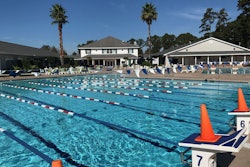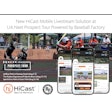SOURCE: National Federation of State High School Associations (NFHS)
INDIANAPOLIS, IN (June 27, 2019) — The role of the designated hitter in high school baseball has been expanded to give coaches an additional option for the 2020 season.
The revision to Rule 3-1-4 was the only change recommended by the National Federation of State High School Associations (NFHS) Baseball Rules Committee at its June 2-4 meeting in Indianapolis. The change was subsequently approved by the NFHS Board of Directors.
“The game is in the best shape it has ever been in the history of high school baseball,” said Elliot Hopkins, NFHS director of sports and student services and liaison to the NFHS Baseball Rules Committee. “This has allowed coaches to coach, players to play and umpires to umpire. This change, which was organic and intuitive, expands the role of the designated hitter and meets the desires of the high school baseball community.”
There are now two scenarios in which a designated hitter may be used.
The first scenario is the traditional use where the designated hitter may be a 10th starter who hits for any one of the nine starting defensive players. The team begins the game with 10 starters: nine defensive players and nine hitters in the batting order, one of whom is the designated hitter hitting for a defensive player.
“The traditional designated hitter role remains intact,” Hopkins said. “However, the committee felt it was necessary to make an additional option available to coaches that could be strategic but also maximize participation.”
The change to Rule 3-1-4 now allows the starting designated hitter to also be a starting defensive player. Utilizing this option, the player has two positions: defensive player and designated hitter. The team would begin the game with nine starters -- nine defensive players -- one of whom also assumes the role of the designated hitter.
“With the change adding pitch-count restrictions to high school baseball, this will allow pitchers to remain in the game as a hitter while removing them from pitching,” Hopkins said. “Typically, pitchers are stronger hitters as well. However, the intent of the rule is not for it to become strictly a pitcher-designated hitter role. The rule provides additional avenues for other position players as well. The change allows coaches to strategize how to keep players in the game to contribute offensively while allowing another player a chance to participate on defense.”
Additionally, a prior rules change involving baseballs and chest and body protectors will take effect on January 1, 2020. As of that date, all baseballs and chest and body protectors used in high school baseball competition shall meet the NOCSAE (National Operating Committee on Standards for Athletic Equipment) standard at the time of manufacture.
According to the 2017-18 NFHS High School Athletics Participation Survey, there are 487,097 boys participating in baseball at 16,196 schools across the country, and 1,762 girls playing the sport in 317 schools.
All baseball rules information will be available on the NFHS website at www.nfhs.org. Click on “Activities & Sports” at the top of the home page and select “Baseball.”
About the National Federation of State High School Associations (NFHS)
The NFHS, based in Indianapolis, Indiana, is the national leadership organization for high school sports and performing arts activities. Since 1920, the NFHS has led the development of education-based interscholastic sports and performing arts activities that help students succeed in their lives. The NFHS sets direction for the future by building awareness and support, improving the participation experience, establishing consistent standards and rules for competition, and helping those who oversee high school sports and activities. The NFHS writes playing rules for 17 sports for boys and girls at the high school level. Through its 50 member state associations and the District of Columbia, the NFHS reaches more than 19,500 high schools and 12 million participants in high school activity programs, including more than 7.9 million in high school sports. As the recognized national authority on interscholastic activity programs, the NFHS conducts national meetings; sanctions interstate events; offers online publications and services for high school coaches and officials; sponsors professional organizations for high school coaches, officials, speech and debate coaches, and music adjudicators; serves as the national source for interscholastic coach training; and serves as a national information resource of interscholastic athletics and activities. For more information, visit the NFHS website at www.nfhs.org.





























